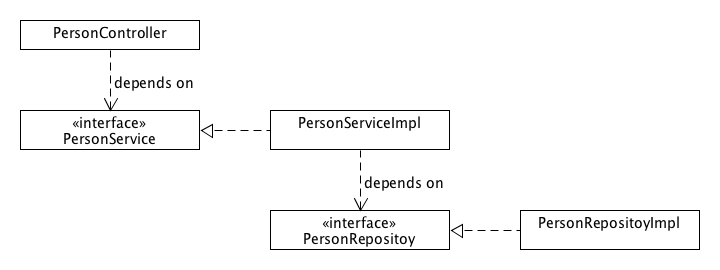Single responsibility
-
Avoid god class.
-
ONE kind of funtionality in ONE class.
Open/Closed
-
Open for extension
-
E.g.: Additional field in the class
-
E.g.: Additional method in the class
-
-
Closed for modification
-
expose only what is necessary using an interface or abstract class.
-
Liskov’s substitution principle
Is a kind of strong behavioral subtyping
if S is a subtype of T, then objects of type T may be replaced with objects of type S without altering any of the desirable properties of T (correctness, task performed, etc.).
https://en.wikipedia.org/wiki/Liskov_substitution_principle
class Engine {
powerInKiloWatt = 120
status = OFF
Engine(){
this.status = ON
}
getStatus(){
return this.status
}
}
class ElectricEngine extends Engine {
energyType = AC // A simple difference to class 'Engine'
ElectricEngine(){
super()
}
}
Applying this rule to the example classes, then Engine can be replaced with ElectricEngine without altering it’s behavior.
There should be no difference in the behavior of the classes Engine and ElectricEngine.
void main(args){
Engine e = new Engine()
assert e.getStatus() == ON
ElectricEngine ee = new ElectricEngine()
assert ee.getStatus() == ON
}
Interface segragation
-
Avoid a god interface.
-
Group functionality by semantic use cases into interfaces.
-
E.g.: Persistence Layer that differs between reading and modifying data instaed of a simple CRUD interface.
IReadOnly {
getPersonById(id);
}
IModify {
createPerson(name, age);
updatePerson(name, age);
deletePerson(id);
}
This is the basic idea behind the CQRS pattern.
Dependency inversion
Avoid to depend on concrete implementations, especially when you expect change!
Examine this on a typical 3-tier application.
Implementations depend directly on each other

A possible implementation in pseudo code:
class PersonController{
PersonServiceImpl service = new PersonServiceImpl()
}
class PersonServiceImpl {
PersonRepositoryImpl repo = new PersonRepositoryImpl()
}
class PersonRepositoryImpl {
Connection con = Connector.createRdbmsConnection()
}
Implementations decoupled with interfaces
To resolve the direct dependencies, introduce an interface for each concrete implementation.
* The concrete implementation of the PersonServiceImpl gets an Interface: PersonService
interface PersonService {
}
class PersonServiceImpl implements PersonService {
PersonRepositoryImpl repo = new PersonRepositoryImpl()
}
-
The consuming class
PersonControllercan now depend on the interface instead of the concrete instance. -
This is called dependency inversion.
class PersonController{
PersonService service = new PersonServiceImpl()
}
Applied to all participants:

|
Note
|
But, why is this important? |
Because implementations can change! And it is very useful to change behavior in a controlled way, like using different data types for different behavior.
So we need two implementations for each data base type RDBMS and NoSQL doing the same thing: Persist a Person object.
E.g. Introducing a new persistence type: NoSQL
-
Rename the
PersonRepositoryImpltoPersonRepositoryRDBMS -
Add a new class
PersonRepositoryNoSQL
interface PersonRepository {
}
class PersonRepositoryRDBMS implements PersonRepository{
}
class PersonRepositoryNoSQL implements PersonRepository{
}